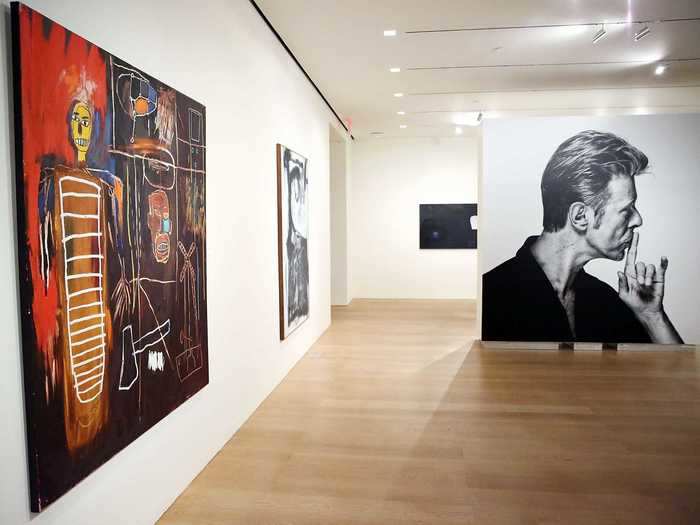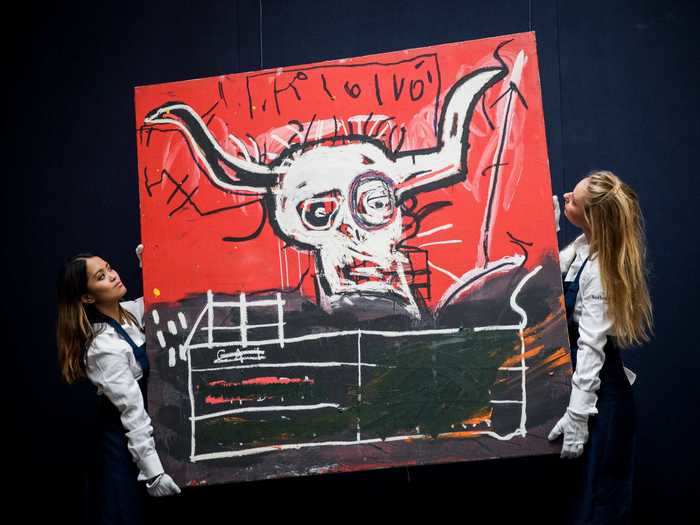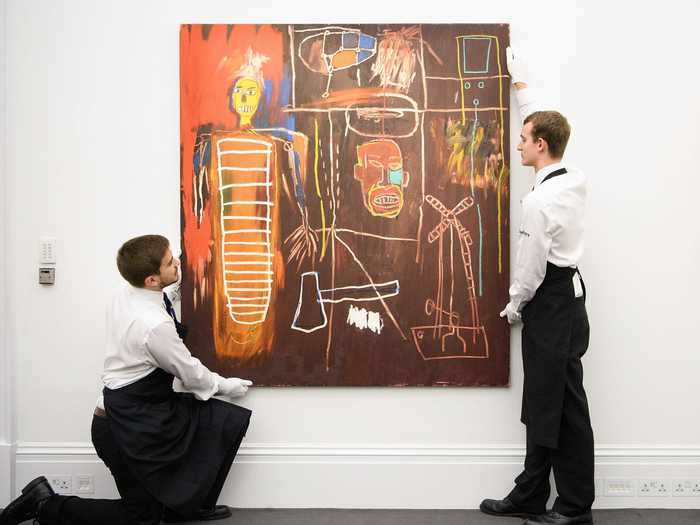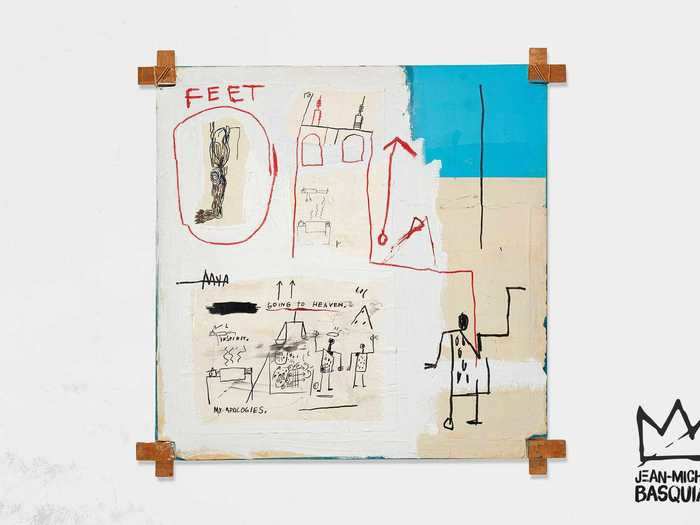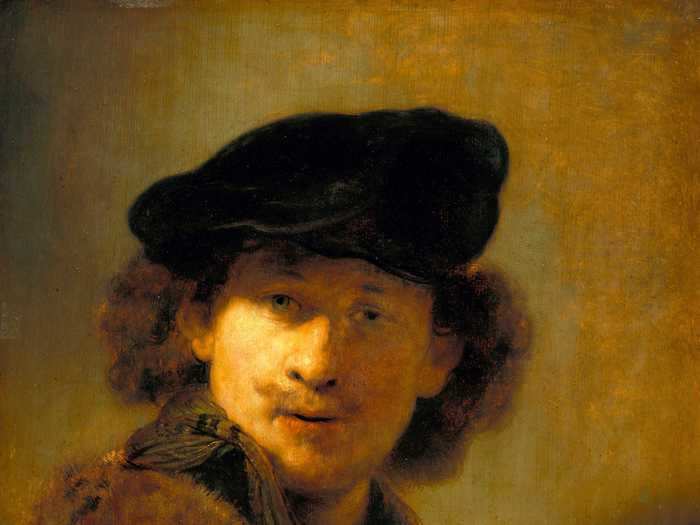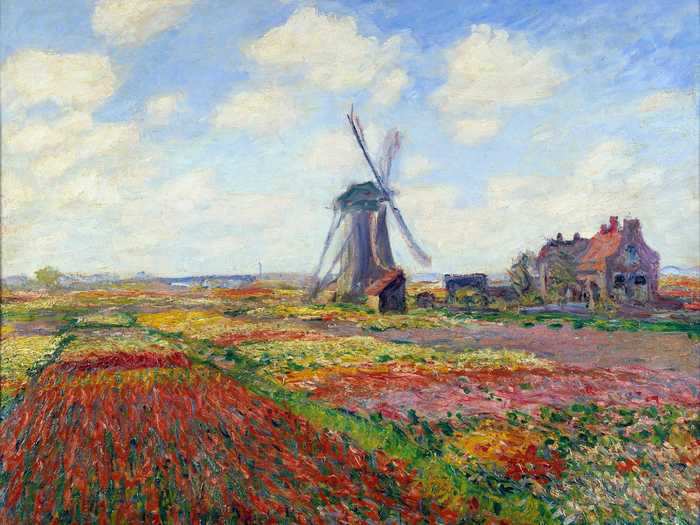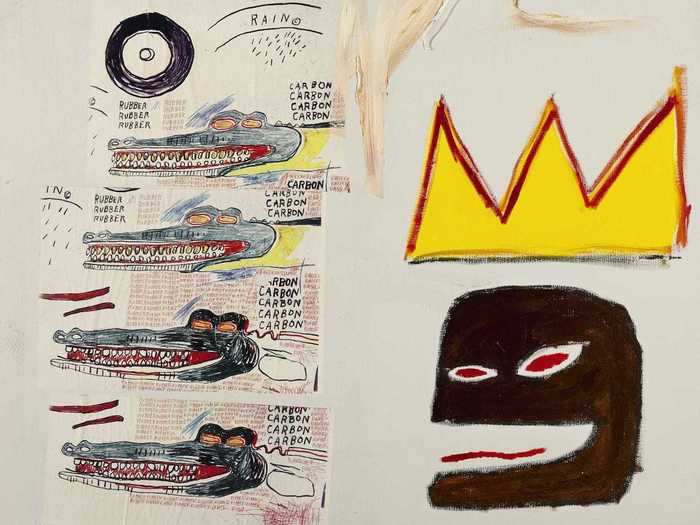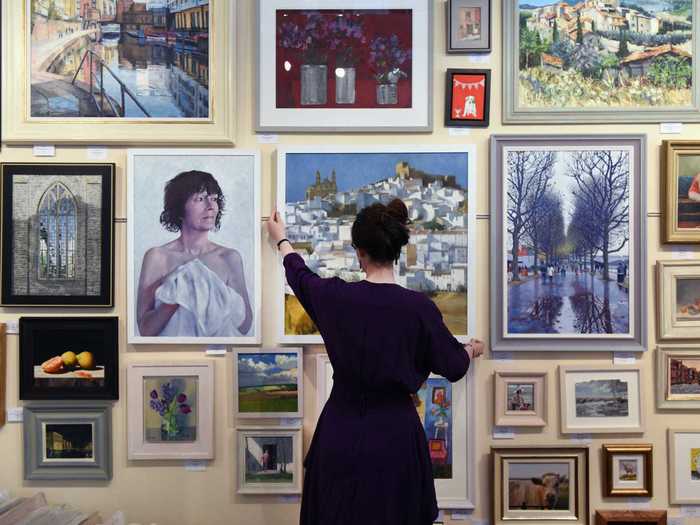Jean-Michel Basquiat is one of the most notable artists of the contemporary era. He died in 1988 at the age of 27.Chris J Ratcliffe/Getty Images for Sotheby's
- Scott Lynn is the founder and CEO of Masterworks, an art investment company that gives people the opportunity to invest in art who might otherwise priced out of the art market.
- The platform features work from the likes of Claude Monet, Andy Warhol, and Jackson Pollock.
- Earlier in 2020, Lynn offered Jean-Michel Basquiat's 1982 "The Mosque," worth $5.5 million, for investment.
- In an interview with Business Insider, Lynn explains why Basquiat paintings are so expensive, gives tips for people looking to enter the art world, and breaks down how Masterworks actually works.
The price of a Jean-Michel Basquiat painting runs into the double-digit millions.
In 2017, Japanese billionaire Yusaku Maezawa paid more than $110 million for Basquiat's 1982 "Untitled," a record high price paid for an American artwork. After the sale, art dealer Jeffrey Deitch told the New York Times that Basquiat was now in the same league as "Francis Bacon and Pablo Picasso."
But what if I told you that you could have had a piece of that deal?
"Most of the investors that we talked to were either fans of a given artist or just never thought they could invest in an asset class like this," Scott Lynn, CEO and founder of Masterworks, told Business Insider.
His art investment platform is seeking to make this kind of blue-chip artwork - like that painted by artists such as Andy Warhol, Jackson Pollock, and Basquiat - more accessible to the general public.
"I believe there's a role for art in any investment portfolio," he said.
Typically, one can only invest in artwork if a piece is bought outright. Masterworks has figured out a way to break down those barriers, and it sells artwork in shares, like stocks, making the art market a game anyone can play.
"I think we're getting really good adoption from everyone that's a very small investor to even larger investors, that have wanted to invest in art but haven't really been comfortable collecting by going into galleries and interacting with the art world," Lynn said.
Lynn took Business Insider inside Masterworks, while explaining just why Basquiat goes for so much.
Art investing has always been popular among the wealthy because the category is considered a "value-preserving asset class," with a lower call risk than assets that are priced daily, such as securities.
Astrid Stawiarz/Getty Images)
Blue-chip artwork is one of the oldest asset classes and is worth almost $1.7 trillion, Lynn said.
As the US entered the coronavirus recession, some ultra high-net-worth-individuals have used their art assets as collateral to obtain hard cash amid the coronavirus pandemic.
A 2019 study by Citi Bank and Masterworks titled "The Global Art Market" showed that the liquidity of artworks is similar to that of real estate or other illiquid assets.
"Over longer periods, art has often acted as a store of wealth, increasing its value ahead of US consumer price inflation," the 2019 report read. "Many of those who collect art, therefore, do so with an eye upon its investment potential as well as its aesthetic appeal."
Business Insider previously reported that while it took the S&P 500 five years to recover from the financial crisis of 2008, it only took the Artnet Index for the Top 100 Artists three years.
Furthermore, during the 2015 and 2016 market sell-offs, Deloitte found that, though both the S&P and Art Index took a hit, high-end works of art worth at least $1 million were able to lead a comeback in some art categories.
"We are seeing a huge influx of investors looking to diversify away from the stock market right now," Lynn told Business Insider. "Art has historically been uncorrelated to other asset classes, it acts as a great diversifier during times like this."
Source: The Global Art Market, Business Insider
Masterworks, which was founded in 2017, is the first company that allows investors to buy shares that represent ownership of blue-chip artists.
ristan Fewings/Getty Images for Sotheby's
Masterworks is the first company to offer paintings filed with the Securities and Exchange Commission as public offerings. Typically, people cannot "invest" in artwork unless they buy the painting outright, but Masterworks files each artwork with the SEC like a company that is going public and issuing shares.
Lynn said people can go to EDGAR, the SEC service that allows people to find information on public companies, and, under "Masterworks," find paintings listed in S-1 filings, which companies use to file for initial public offerings of shares.
The Masterworks sales team is governed by the Financial Industry Regulatory Authority, also known as FINRA, a corporation that allows regulates registered dealer firms in the US.
"All of our investors have never invested in the art market before. So I think it gives people comfort knowing that each of these offerings is qualified by the SEC," Lynn said. "We've always felt that it was important to have these securities be regulated."
The art world can be intimidating to many people, Lynn said, one reason his company is gaining traction with those who have always wanted to invest, but haven't been comfortable collecting, going into galleries, or interacting with the art world.
Masterworks releases a new painting every three to four weeks for investment, with share purchases beginning at $20. Masterworks says it has over 36,000 investors using its platform and is growing rapidly at 10,000-plus per month.
Leon Neal/Getty Images
Masterworks' process works like this: the company sources paintings and commits its capital to buy them, then files the paintings with the SEC for public offering. From there, investors can begin purchasing shares of the painting. Masterwork sells the painting and each investor shares (in their given proportion) the profit or loss from the sale.
Masterworks picks its paintings by going through an auction database, selecting artists based on appreciation rate, demand, and risk market.
"We tell all investors to think about investing very similar to how you can invest in anything else, like stocks," Lynn said. "Art is an uncorrelated asset class that historically, at least at the top and in the market, has outperformed other asset classes. And that's one of the reasons that we fundamentally believe it should be part of an investor's portfolio."
Source: Masterworks
Earlier this year, Masterworks offered a $5.5 million Basquiat called "The Mosque." It was one of the company's highest-valued paintings.
Masterworks' $5.5 million Basquiat painting entitled "The Mosque."
Masterworks
Lynn said the value of Basquiat paintings have risen roughly 18% per year for the past 10 years, mostly due to the fact that Basquiat died so young and left so little work behind.
Basquiat's career began in the 1970s in New York City, where he was one half of the graffiti art collective SAMO, and would tag walls throughout the Lower East Side of Manhattan. As he transitioned into painting, he became known in the abstract and neo-expressionist genres and created paintings that addressed subjects including racism, segregation, and wealth inequality.
Basquiat was popular during his lifetime, and had a retrospective in the Whitney Art Museum not even five years after his death. Now, over 20 years later, his work is among the most valuable in the world.
"He's always been a big name and that's pretty unusual for someone as young as he was to be as well known as he was," Lynn said. "He was an exception in that way."
Before one jumps to start investing in the art world, there are a few aspects of the market one should become familiar with. For example, Lynn said people should study the return value of works and artists they are interested in.
Self-Portrait by Rembrandt with Velvet Beret, 1634.
VCG Wilson/Corbis via Getty Images)
Lynn said he recommends new clients look at portfolios, and choose a group of paintings from either blue-chip artists or other established artists, such as Jeff Koons or Damien Hirst, to allocate money to.
"Appreciation in the art market tends to follow recency," he said. For the most part, contemporary art rises in value of roughly 11% a year. The art category of Old Masters, which encompasses work from the 19th century and beyond, appreciates at a far lower rate — only 2% a year, meaning the work does not increase in value as fast as works of contemporary art.
Old Masters, "accelerates rapidly and it slowly, over the course of the century, falls out of style and decelerates quickly," he continued.
He pointed to the fact that if someone buys a Rembrandt painting (work from the 17th-century Dutch painter), in 20 years the painting will probably sell for the same price it was purchased for today, rather than double or triple in value.
He also said to pay attention to trends in the market. For example, most people today are very interested in the era spanning Impressionism to the present - roughly works from the late 1800s onward.
Tulip Fields in Holland (with a windmill). Painting by Claude Monet (1840-1926), oil on canvas (65x81 cm), 1886.
Sotheby's
The 2019 Citi Bank report found that between 1985 and 2018, annualized returns in the art world varied by category, but overall market returns were at 5.3%: the Impressionist category was 5.0%, and Postwar and Contemporary categories were at 7.5%.
Gold, historically a place for wealthy people to invest in to preserve case value, had annualized returns of just more than 4.2% since 1985, according to the report.
"[People are] even more so focusing on Postmodern, kind of post-World War II through the present," Lynn said. "And then younger people, millennials are really focused just on contemporary. So it really depends on the age. But you know, there are exceptions like Basquiat, everyone loves Basquiat."
Those new to the art world should also be cautious of investing in high-risk artists - primarily living artists that aren't established in the secondary market, also referred to as emerging artists.
Lot 21, Basquiat, Untitled, 1984
Sotheby's
Because its difficult to predict whether an artist will become successful or not, investing in new work can yield unpredictable results.
Instead, for those who don't like taking risks, Lynn recommends investing in the paintings of Claude Monet, the renowned French impressionist painter. Lynn said Monet is one of "the lowest-risk artists" and that his returns are "most predictable."
"We think that's a really interesting investment for someone who doesn't want to take a lot of risks and is willing to sort of sacrifice to have the low-risk nature of the investment," Lynn said. "Basquiat's a rare exception. His market is pretty unmatched."
After finding a painting and category to invest in, the next step is to, well, invest. And if you have the means, go to a gallery, and look to buy.
The Llewellyn Alexander Gallery in Waterloo
Mary Turner/Getty Images
Going into a gallery to buy a piece of art can be intimidating, but online platforms such as Artsy let people buy art from the comfort of their own homes. Artsy has artwork in all price ranges, and its a good way for beginners to practice online bidding and buying.
Putting on a nice outfit and going into a gallery could also work, and going to art fairs is a good way to become accustomed to the emerging artists of the day. From there, Christie's allows people to buy and bid on more expensive works, but again, if the goal is to add an expensive painting to a portfolio — without spending millions — a platform such as Masterworks is the way to go.
Lynn said that besides these platforms, "there's literally no way to invest in art other than by buying a multimillion-dollar painting. So it's the only asset class that's really left that's large, that doesn't have a way for people to invest in it."
When you put art in the context of other asset classes, he said, "art is $1.7 trillion, private equity is $3.5 trillion, gold is $5 trillion, total valuable equities in the US $30 trillion," it's a much bigger market than you might have thought. "So that's sort of the spectrum to think about."

